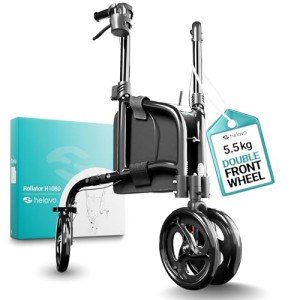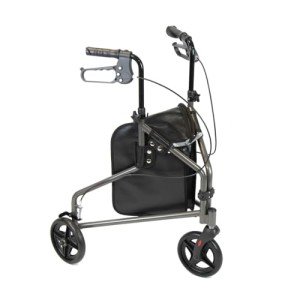outdoor-walker8024
outdoor-walker8024
20 Top Tweets Of All Time Mobility Aid
Understanding Mobility Aids: Enhancing Independence and Quality of Life
Mobility aids are vital tools that help individuals with physical disabilities or conditions that hinder their ability to move easily. These aids not only promote independence and boost lifestyle but likewise supply safety and assistance for users in various environments. The landscape of mobility aids is broad, including a variety of gadgets tailored to fulfill individual requirements. This article aims to explore the various types of mobility aids, their benefits, factors to consider for use, and regularly asked concerns.
Types of Mobility Aids
Mobility aids can be classified into several significant types, each created to help in specific methods. Below is a table summarizing the most common mobility aids:

| Type of Mobility Aid | Description | Suitable Use Case |
|---|---|---|
| Wheelchairs | A chair mounted on wheels used by those not able to walk. | Long-lasting special needs or severe mobility concerns. |
| Walkers | A frame that offers assistance for people while walking. | Post-surgery recovery or balance issues. |
| Walking sticks | A stick utilized for balance and assistance while walking. | Moderate mobility concerns or as a preventive measure. |
| Rollators | A walker equipped with wheels and typically a seat. | People requiring support over longer distances. |
| Crutches | Gadget utilized to raise and support the body weight of an individual with a leg injury. | Momentary injuries requiring non-weight bearing. |
| Scooters | A motorized device for those who can sit but not stroll fars away. | Long trips and fatigue-prone individuals. |
| Raise Chairs | Recliners that raise to help users in standing up. | Elderly individuals or those with severe pain. |
Benefits of Mobility Aids
Using mobility aids extends beyond simple transportation; they serve several critical functions in improving the wellness of users:
- Independence: Mobility aids empower users to perform everyday activities without relying greatly on caregivers or support from others.
- Safety: Many mobility aids are created to lessen the threat of falls, offering users with stability when moving around.
- Improved Quality of Life: By improving mobility, people can take part in social activities, workout, and maintain community connections, positively affecting their psychological health.
- Access to Environments: Mobility aids can assist in access to places that may otherwise be challenging to browse, such as public transport and public areas.
- Assistance Recovery: They play an essential function in rehabilitation following surgery or injury by promoting progressive mobility and assisting healing.
Considerations for Choosing the Right Mobility Aid
Picking the suitable mobility aid can significantly influence a person’s quality of life. Here are several key considerations to bear in mind:
- Level of Mobility Impairment: Assess the intensity of mobility problems to determine the most appropriate type of aid.
- User’s Physical Condition: Consider elements like weight, strength, and overall health.
- User’s Lifestyle and Environment: Analyze where the mobility aid will be utilized usually: indoors, outdoors, or both.
- Functional Needs: Evaluate if additional functions such as storage, seating, or height changes are required.
- Assessment with Professionals: Always seek suggestions from healthcare experts for assistance customized to private scenarios.
Frequently Asked Questions (FAQs)
Q1: What is the distinction in between a walker and a rollator?A1: A walker is an easy frameused for assistance and balance, while a rollator has wheels, supplying easier mobility and typically features additional features such as a seat and storage. Q2: Can mobility aids be covered by insurance?A2:

Many medical insurance plans, consisting of Medicare, might cover mobility aids if they are deemed clinically needed. It is recommended to consult with your insurance coverage company for particular information. Q3: How do I know when it’s time to use a mobility aid?A3: If you’ve experienced frequent falls, consistent discomfort
while walking, or have trouble completing everyday activities
, it may be time to think about a mobility aid. Speak with a healthcare professional for individualized suggestions. Q4: Are there mobility aids created for outdoor use?A4: Yes, lots of mobility aids are particularly created for Outdoor Walker environments, including scooters, outdoor walkers, and all-terrain wheelchairs, geared up to manage different surfaces. Q5: Can I use a mobility aid after surgical treatment, like knee replacement?A5: Yes, mobility aids such as walkers and crutches are frequently recommended post-surgery to aid recovery and preserve safety as you regain
strength. Mobility aids play an indispensable function in supporting people with mobilitydifficulties, assisting in self-reliance, and improving general lifestyle. With a diverse range of alternatives available, it’s crucial for users to evaluate their distinct needs and seek advice from specialists to pick the most proper aid. As technology and style continue to develop, these aids will unquestionably become even more user-friendly and efficient, promoting a more inclusive world for everybody. By understanding the various kinds of mobility aids and their particular benefits, people can make educated options that boost their mobility and facilitate a more active and fulfilling way of life.


